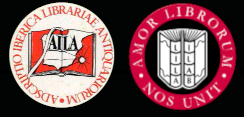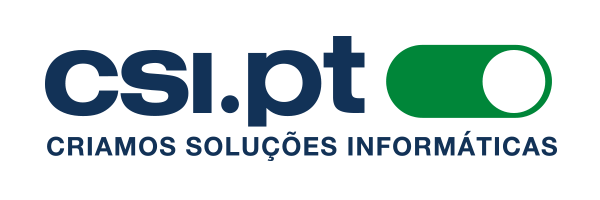


Home |
Temáticas |
Catálogos |
Pedidos |
  |  |
|||||||
|

|
RUGENDAS. (Johann Moritz) HABITANTE DE GOYAS, QUADRO A ÓLEO PINTADO SOBRE MADEIRA. |
|
|
Clique nas imagens para aumentar. LEITÃO DE ANDRADE. (Miguel) MISCELLANEA DO SITIO DE N[OSSA]. S[ENHOR]A DA LUZ DO PEDROGÃO GRANDE.Aparecimento de sua S[an]ta Imagem. Fundação do seu convento e da Sé de Lisboa. Expugnação dela. Perda Del Rei Sebastião. E Quem se ia. Nobreza. Sor. Sª. Vassalo Del Rei Rico Home. Infanção. Cortesia Mizura Referencia e Tirar o chapéu e prodígios. Com Muitas curiosidades e Poesias diversas. Por Miguel Leitão de Andr[ad]a Come[nda]dor de Christo. Em Lx. [Lisboa] por Matheus Pinheiro. ano 1629. In 8º de 19x13 cm. Com [xvi], 635, [i em br.] págs. Encadernação da época em pergaminho flexível, com o título da obra escrito à pena na lombada em letra coeva e tinta castanho claro e com o título reduzido só à primeira palavra em tinta mais escura e letra do século XVIII. Ilustrado em extratexto com 3 gravuras duas delas assinadas por João Baptista Lusitano e João Baptista: frontispício gravado a buril em chapa de metal com o título e pé de imprensa enquadrados por uma composição arquitectónica formada por um pórtico de colunas geminadas rematadas por um frontão circular com o brasão do autor. Na frente das colunas estão duas figuras de pé que representam pessoas da família de Leitão de Andrade que padeceram martírio pela religião; gravura de página inteira com o retrato do Doutor Miguel Leitão de Andrade, de joelhos, com armadura e o hábito da Ordem de Cristo oferecendo o seu livro a Nossa Senhora; e uma gravura desdobrável da Batalha de Alcácer Quibir (sem assinatura e que não é referida por E. Soares). No texto está ilustrado com o brasão dos Figueiredos, página 33; partitura musical, página 230-231; brasão de Freire página 286; gravura na página 492; Armas de Leitões página 605; com a transcrição exacta de três inscrições epigráficas romanas nas páginas 606 e 607 e com o brasão da Vila da Sertã, na página 628. Exemplar com defeitos no pé da lombada e na charneira, com folhas de guarda renovadas, com uma rubrica coeva no verso do frontispício gravado, com falta de uma segunda gravura sobre a Batalha de Alcácer Quibir, com ligeiros furos de traça à cabeça das páginas 531 ao fim. Apresenta um certo acastanhamento do papel próprio da sua qualidade e tem diversas folhas com dimensões inferiores às restantes. 1ª Edição desta obra raríssima e muito procurada. Só foi reeditada no século XIX, em 1867 e mais recentemente em 1983, 1993 e 2012. É de excepcional valor e riqueza sobre vários aspectos: é considerada um clássico da língua portuguesa; tem grande importância para a história do Reinado de D. Sebastião e da Batalha de Alcácer Quibir, pois o autor participou nela (ver Diálogo VII); tem grande valor para os estudos camonianos por causa de Leitão de Andrade transcrever poesias de Camões com variantes; transcreve pela primeira vez o que será uma das mais antigas poesias portuguesas, talvez do século IX e que ainda hoje é alvo de grande polémicas e discussões científicas, tem grande interese para a história da música do século XVI, por incluir a letra e a partitura do célebre romance sobre a Batalha de Alcácer Quibir - Puestos estan frente a frente; é importante para a história local de Pedrogão Grande, para a história da literatura portuguesa, para o estudo das formas do sentimento religioso do século XVI e XVII e para estudos de antropologia e sociologia. Está dividida em vinte diálogos em que intervêem Galácio e Devoto, onde são descritos muitos factos históricos relativos a Pedrogão Grande, tais como o milagre que deu origem à veneração de Nossa Senhora da Luz, a fundação do Convento Dominicano da mesma invocação Mariana, onde habitou durante algum tempo o célebre Frei Luís de Granada, assim como sobre a Vila da Sertã, sobre a Conquista de Lisboa aos Mouros, e descreve muitas tradições, usos e costumes da sua terra natal. É impossível elencar aqui os numerosos temas que o autor trata, mas como exemplo poderemos referir que até refere a necessidade da construção de uma ponte sobre o Rio Tejo. Miguel Leitão de Andrade (Pedrogão 1555 - Lisboa 1630) Comendador da Ordem de Cristo. Cursou na Universidade de Coimbra a faculdade de Cânones, porém não chegou a formar-se, partindo para a jornada de Africa com D. Sebastião. Ficou cativo dos mouros na batalha de Alcácer Quibir em 4 de Agosto de 1578, sendo resgatado algum tempo depois. Apoiou D. Antonio, Prior do Crato, pelo que foi perseguido e esteve preso durante alguns tempo, por ordem de Filipe II. Casou quatro vezes e deixou em testamento um importante legado à Misericórdia de Pedrogão Grande. João Baptista ( ? - ?) foi um dos mais notáveis artistas do século XVII, «um dos mais operosos e também um dos mais hábeis» segundo afirma Ernesto Soares. Assinava João Baptista Coelho ou João Baptista Lusitano e não se conhecem quaisquer dados biográficos excepto que trabalhou na Casa da Moeda. Nos nossos dias são conhecidas cerca de trinta gravuras da sua autoria.
Illustrated hors text with 3 engravings two of them signed by João Baptista Lusitano and João Baptista: frontispiece etched on metal plate with the title and title page framed by an architectural composition formed by a portico of twin columns topped by a circular headpiece with the author's coat of arms. In front of the columns are two standing figures representing people from Leitão de Andrade's family who suffered martyrdom for religion; full-page engraving with the portrait of Doctor Miguel Leitão de Andrade, kneeling, wearing armour and the habit of the Order of Christ, offering his book to Our Lady; and a fold-out engraving of the Battle of Alcácer Quibir (unsigned and not mentioned by E. Soares). The text it is illustrated with the coat of arms of the Figueiredos, page 33; musical score, page 230-231; coat of arms of Freire page 286; engraving on page 492; Arms of Leitões page 605; with the exact transcription of three Roman epigraphic inscriptions on pages 606 and 607 and with the coat of arms of the town of Sertã, on page 628. Copy with defects at the foot of the spine and at the hinge, with renewed endpapers, with a coeval rubric on the back of the engraved frontispiece, with a second engraving on the Battle of Alcácer Quibir missing, with slight moth holes at the head of pages 531 to the end. There is some browning to the paper typical of its quality and several leaves are undersized. 1st Edition of this very rare and much sought-after work. It has only been reprinted in the 19th century, in 1867 and more recently in 1983, 1993 and 2012. It is of exceptional value and richness on several aspects: it is considered a classic of the Portuguese language; it has great importance for the history of the Reign of King Sebastião and the Battle of Alcácer Quibir, as the author participated in it (see Dialogue VII); it has great value for Camonian studies because of Leitão de Andrade's transcription of Camões' poetry with variants; it transcribes for the first time what is probably one of the oldest Portuguese poems, perhaps from the 9th century, and which is still today the subject of great controversy and scientific discussion; it is of great interest for the history of 16th century music, since it includes the lyrics and the score of the famous novel about the Battle of Alcácer Quibir - Puestos estan frente a frente; is important for the local history of Pedrogão Grande, for the history of Portuguese literature, for the study of the forms of religious feeling in the 16th and 17th century, and for studies in anthropology and sociology. It is divided into twenty dialogues in which Galácio and Devoto intervene, describing many historical facts about Pedrogão Grande, such as the miracle that gave rise to the veneration of Nossa Senhora da Luz, the foundation of the Dominican Convent of the same Marian invocation, where the famous Friar Luís de Granada lived for some time, as well as the town of Sertã, the Conquest of Lisbon from the Moors, and describes many traditions, uses and customs of his homeland. It is impossible to list here the numerous subjects the author deals with, but as an example we may mention that he even mentions the need to build a bridge over the Tagus River. Miguel Leitão de Andrade (Pedrogão 1555 - Lisbon 1630) Commander of the Order of Christ. He studied Canon Law at the University of Coimbra, but did not graduate, leaving for the journey to Africa with King Sebastião. He was captured by the Moors in the battle of Alcácer Quibir on August 4, 1578, being rescued some time later. He supported D. Antonio, Prior of Crato, for which he was persecuted and imprisoned for some time by order of Filipe II. He married four times and left in his will an important legacy to the Misericórdia of Pedrogão Grande. João Baptista ( ? ? - ?) was one of the most remarkable artists of the 17th century, "one of the most industrious and also one of the most skilful" according to Ernesto Soares. His signature was João Baptista Coelho or João Baptista Lusitano and no biographical data is known, except that he worked at the Mint. Nowadays about thirty engravings of his authorship are known. Referências/References: Iberian Books B28004 (20899). USTC, no. 5010734. Ernesto Soares - História da gravura (1971) I, 190. Sousa da Cãmara, 1645. Avila Perez, 4134. Azevedo e Samodães, I, 1742. Monteverde, 3070. Nepomuceno 943. Garcia Peres, 317-323. Inocêncio VI, 239. Barbosa Machado III, 475. Referência: 1507JC077
Local: M-9-B-3 Caixa de sugestões A sua opinião é importante para nós. Se encontrou um preço incorrecto, um erro ou um problema técnico nesta página, por favor avise-nos. 
|
Pesquisa Simples




|
||
 |
|||
|